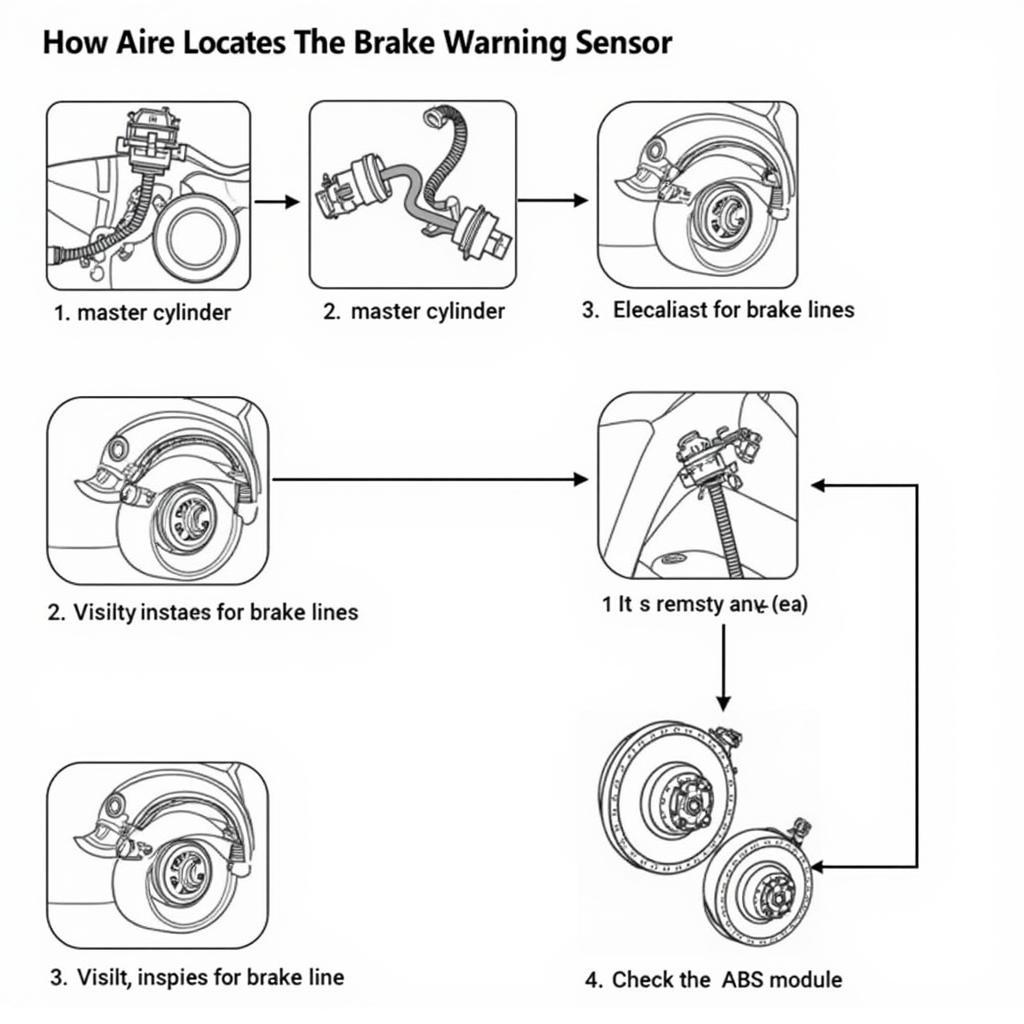Troubleshooting brake issues on your International 4200 often leads to the brake warning sensor. This component plays a crucial role in your truck’s safety system, alerting you to potential brake problems. Locating this sensor can sometimes be a challenge. This guide provides a clear roadmap to help you pinpoint the International 4200 brake warning sensor location, empowering you to address brake issues efficiently.
 International 4200 Brake System Overview
International 4200 Brake System Overview
Understanding the Brake Warning Sensor’s Role
Before diving into the sensor’s location, it’s vital to understand its function. The brake warning sensor primarily monitors your truck’s brake fluid pressure. If it detects a drop below a safe level, it triggers a warning light on your dashboard, signaling a potential problem within your braking system.
Common Locations for the Brake Warning Sensor
The exact location of the brake warning sensor can vary slightly depending on the specific model year and trim level of your International 4200. However, it’s typically found in these common areas:
-
Master Cylinder: The most frequent location is directly on the master cylinder. The master cylinder is responsible for distributing brake fluid pressure, making it a logical location for the sensor to monitor fluid levels.
-
Brake Lines: In some models, the sensor may be located along the brake lines, usually near the master cylinder. This positioning allows it to detect pressure changes within the brake lines.
-
ABS Module: On models equipped with Anti-lock Braking Systems (ABS), the sensor might be integrated into the ABS module. The ABS module controls brake pressure during hard braking, making it another logical point for sensor placement.
 Steps to Locate the Brake Warning Sensor on an International 4200
Steps to Locate the Brake Warning Sensor on an International 4200
Tips for Locating the Sensor
- Consult Your Owner’s Manual: The owner’s manual often provides specific details on the sensor’s location for your particular International 4200 model.
- Follow the Brake Lines: Start at the master cylinder and visually trace the brake lines. The sensor is usually a small, cylindrical component connected to the brake system.
- Look for Wires: The sensor will have electrical wires connected to it, typically leading to the vehicle’s electrical system.
When to Seek Professional Help
If you have difficulty locating the sensor or suspect a problem beyond a simple sensor replacement, seeking help from a qualified mechanic specializing in heavy-duty trucks is recommended.
FAQs about the International 4200 Brake Warning Sensor
1. What does the brake warning light indicate?
The brake warning light usually signals low brake fluid, a potential leak in the brake system, or a problem with the brake warning sensor itself.
2. Can I drive with the brake warning light on?
It’s strongly discouraged to drive with the brake warning light on. Doing so can compromise your safety.
3. How often should the brake warning sensor be replaced?
While there’s no set replacement interval, it’s good practice to inspect the sensor during routine brake maintenance.
4. What are the signs of a faulty brake warning sensor?
A constantly illuminated brake warning light, even with sufficient brake fluid, may indicate a faulty sensor.
5. Is replacing a brake warning sensor a complex task?
While the process isn’t overly complex, if you’re uncomfortable working on your truck’s braking system, it’s best to consult a professional.
Conclusion
Locating the brake warning sensor on your International 4200 is a crucial step in diagnosing and resolving brake system issues. Understanding its typical locations and utilizing the provided tips will help you confidently address potential problems, ensuring the safety and reliability of your truck. Always prioritize safety and seek professional assistance if needed.
